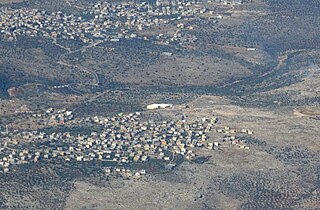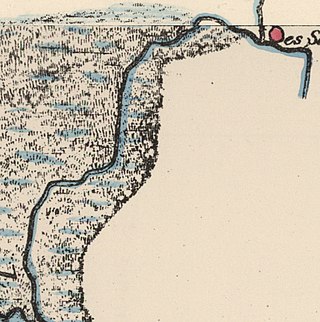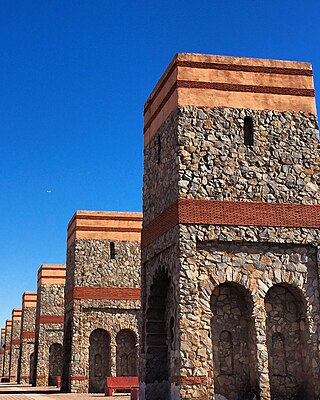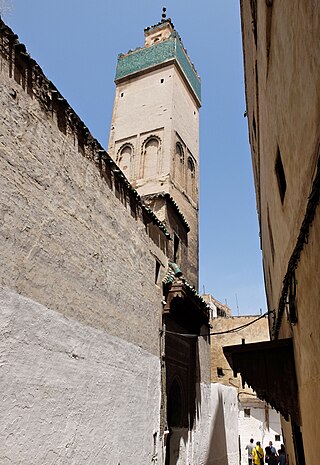
A tariqa is a religious order of Sufism, or specifically a concept for the mystical teaching and spiritual practices of such an order with the aim of seeking haqiqa, which translates as "ultimate truth".

A zawiya or zaouia is a building and institution associated with Sufis in the Islamic world. It can serve a variety of functions such a place of worship, school, monastery and/or mausoleum. In some regions the term is interchangeable with the term khanqah, which serves a similar purpose. In the Maghreb, the term is often used for a place where the founder of a Sufi order or a local saint or holy man lived and was buried. In the Maghreb the word can also be used to refer to the wider tariqa and its membership.
The Badawiyyah, Sufi tariqah, was founded in the thirteenth century in Egypt by Ahmad al-Badawi (1199-1276). As a tariqah, the Badawiyyah lacks any distinct doctrines.

A Sufi lodge is a building designed specifically for gatherings of a Sufi brotherhood or tariqa and is a place for spiritual practice and religious education. They include structures also known as khānaqāh, zāwiya, ribāṭ, dargāh and takya depending on the region, language and period. In Shia Islam, the Husayniyya has a similar function.

The Mohammad Al-Amin Mosque, also referred to as the Blue Mosque, is a Sunni Muslim mosque located in downtown Beirut, Lebanon.
Sidi Ali ibn Harzihim or Abul Hasan Ali ibn Ismail ibn Mohammed ibn Abdallah ibn Harzihim/Hirzihim was born in Fes, Morocco and died in that same city in 559/1163. He was a berber Sufi teacher, leader of a Ghazalian zawiya in Fes and was the spiritual master of Abu Madyan. The water source "Sidi Harazim" was called after him.
Abu al-Abbas Ahmad ibn Ja'far al-Khazraji al-Sabti, better known as Sidi Bel Abbas, was a Moroccan Muslim saint. He is the patron saint of Marrakesh in the Islamic tradition and also one of the "Seven Saints" of the city. His festival was founded by al-Hasan al-Yusi at the instigation of Moulay Ismael.

The Zawiya of Moulay Idris II is a zawiya in Fez, Morocco. It contains the tomb of Idris II, who ruled Morocco from 807 to 828 and is considered the main founder of the city of Fez. It is located in the heart of Fes el-Bali, the UNESCO-listed old medina of Fez, and is considered one of the holiest shrines in Morocco. The current building experienced a major reconstruction under Moulay Ismail in the early 18th century which gave the sanctuary its overall current form, including the minaret and the mausoleum chamber with its large pyramidal roof.

Az-Zawiya is a Palestinian town in the Salfit Governorate in the northern West Bank, located west of Salfit and south of Qalqilya. According to the Palestinian Central Bureau of Statistics, az-Zawiya had a population of 6,033 in 2017. The town's population is made up of primarily three families: Shuqeir (45%), Muqadi (30%) and Raddad (20%), while the remaining 5% consists of Palestinian refugee families such as Shamlawi, Rabi and Yusif.

Al-Zawiya, was a Palestinian Arab village in the District of Baysan. It was depopulated by the Israel Defense Forces during the 1948 Arab-Israeli War on May 15–18, 1948 under Operation Gideon. It was located 11.5 km northeast of Baysan. The Crusader Castle Belvoir is located close to the village.

Al-Zawiya was a Palestinian Arab village in the Safad Subdistrict. It was depopulated during the 1947–1948 Civil War in Mandatory Palestine on May 24, 1948, by the Palmach's First Battalion of Operation Yiftach. It was located 23 km northeast of Safad.

The Zawiya Dila'iya, also known as the Zawiyaof Dila and the Dila'iya Sultanate, was a Sufi brotherhood, centred in the Middle Atlas range of Morocco.
Az-Zawiya is a Palestinian village in the Jenin Governorate in the northern West Bank, located south of Jenin. According to the Palestinian Central Bureau of Statistics (PCBS) census, the village had a population of 770 in 2007 and 1,006 by 2017.

The Zawiya al-Nussak is a historic zawiya located just outside the old city walls of Salé, Morocco.

The Zawiya of Sidi Abd el-Aziz is an Islamic religious complex (zawiya) in Marrakesh, Morocco. It is centered around the tomb of the Muslim scholar and Sufi saint Sidi Abu Faris Abd al-Aziz Abd al-Haq at-Tabba', who died in Marrakesh in 1508. Sidi Abd el-Aziz is considered one of the Seven Saints of Marrakesh, and his tomb was a prominent stop for pilgrims to Marrakesh. The zawiya is located on Rue Mouassine at its intersection with Rue Amesfah.

The Seven Saints of Marrakesh or Patron Saints of Marrakesh are seven historical Muslim figures buried in Marrakesh, Morocco. Each of them was a famous Muslim jurisprudent, scholar or wali venerated for their piety or other mystical attributes. Their tombs form the basis of a centuries-old annual pilgrimage or ziyara, during which visitors pray at each of their tombs over seven days.

The Zawiyaof Sidi Abdelkader al-Fassi, also known as the Zawiya al-Fassiya, is one of the most important historical zawiyas in Fes, Morocco. It is named after Sidi Abdelkader al-Fassi, a highly important 17th-century Muslim scholar, mufti, and Sufi saint of the city who is buried in the zawiya. The building is located in the Qalqliyin neighbourhood in the south of Fes el-Bali, the old medina of Fes. It was one of several zawiya sites in the city and across the country which were associated with the al-Fassiya tradition of Sufism.

The Zawiya of Sidi Taoudi Ben Souda is a zawiya and mosque in Fes el-Bali, the old medina of Fes, Morocco. It is named after Muḥammad al-Tāwdī Ibn al-Ṭālib Ibn Sūda al-Murrī, an 18th-century Sufi sheikh who is considered by some to be one of the foremost intellectuals and Muslim scholars of Morocco's history.

The Zawiyas in Algeria are religious buildings located in Algeria honoring the memory of patron saints and dedicated to Quranic and religious education. They are associated with Sufism, with each affiliated to a tariqa (torouq) brotherhood under the supervision of the Ministry of Religious Affairs and Endowments, in accordance with the precepts of the Algerian Islamic reference.
The Algerian Islamic reference is the fundamentalist and legal framework for the practice of the religion of Islam in Algeria within Sunnism under the tutelage of the Ministry of Religious Affairs and Endowments.












